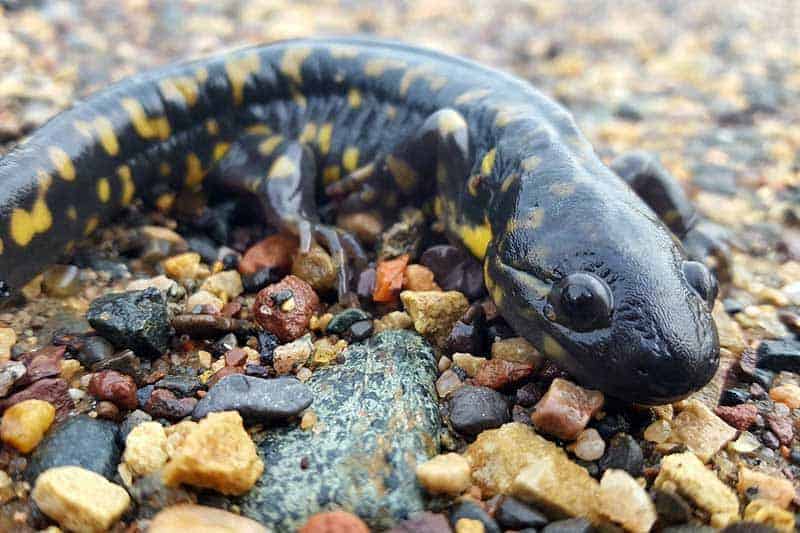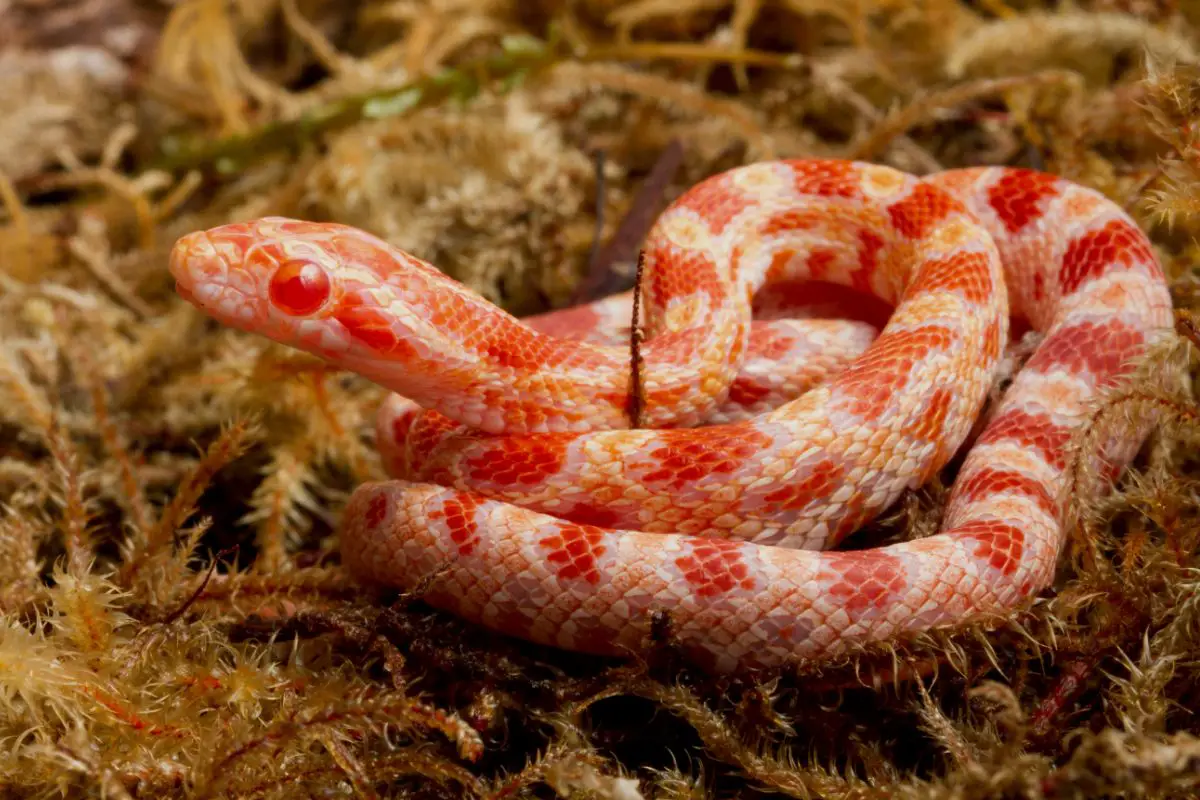Salamanders include animals from various different family species. Our common idea of what a salamander looks like is typically those belonging to the true salamander family. However, there are also sirens, amphiumas, mudpuppies, and newts that are salamanders.
Although there are nearly 50 species and subspecies of salamanders in Missouri, the amphibian population in the state is declining. A fifth of Missouri’s salamander species has been declared Species of Conservation Concern, highlighting the challenges faced by the salamanders of Missouri. Because of this, the state generally protects salamanders, and you have to release them if you accidentally catch one while fishing.
In this article, I will look at some of the common salamander species you can find in Missouri.
Enjoy!
19 Salamanders in Missouri
Examples of 19 different species of salamanders in Missouri are the Spotted salamander, Marbled salamander, Eastern Tiger salamander, Western Slimy salamander, Long-tailed salamander, Four-toed salamander, Ringed salamander, Mole salamander, Central newt, Cave salamander, Grotto salamander, Ozark Zigzag salamander, Southern Red-backed salamander, Common Mudpuppy, Red River Mudpuppy, Western Lesser siren, Eastern Hellbender, Ozark Hellbender, and Three-toed amphiuma.
1. Spotted Salamander
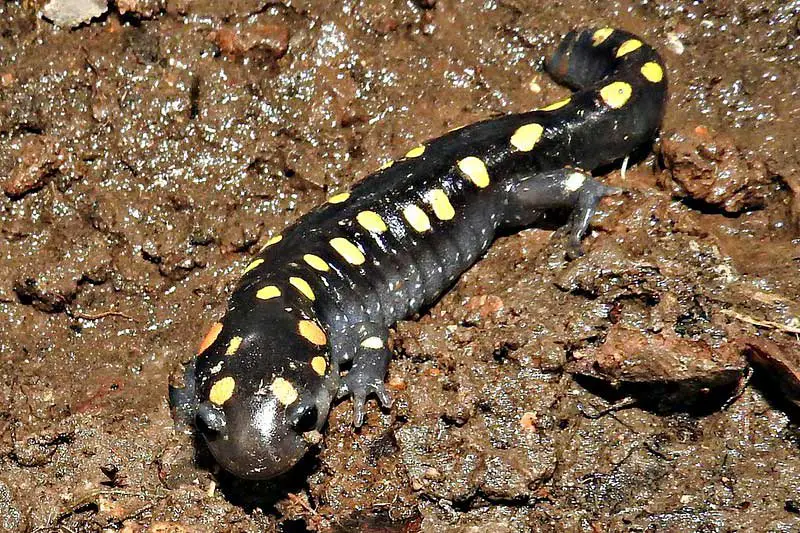
Scientific name: Ambystoma maculatum
The Spotted salamander is distinguishable by their two rows of yellow or greenish-yellow spots along their black or dark gray backs. You can find them near shallow ponds in damp hardwood forests living under rocks, logs, dead leaves, or in burrows. They live throughout the southern two-thirds of Missouri, except the eastern areas of the Bootheel.
2. Marbled Salamander
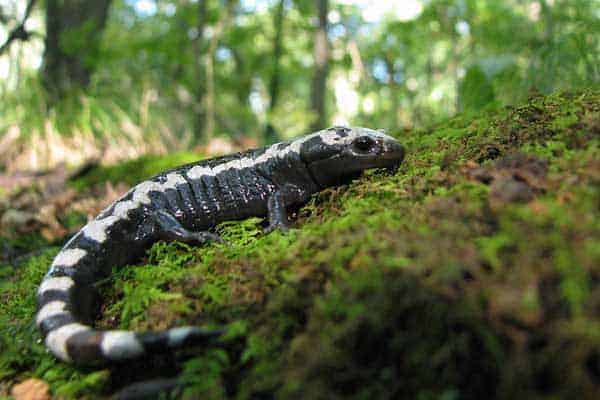
Scientific name: Ambystoma opacum
You can find the Marbled salamander in the Ozark plateau, Mississippi Lowlands, and the river hills of the Missouri River. There is also an isolated population in St. Clair County. These salamanders grow between 3.5 and 4.5 inches long and are typically jet black and shiny with gray or silver-white crossbands.
3. Eastern Tiger Salamander
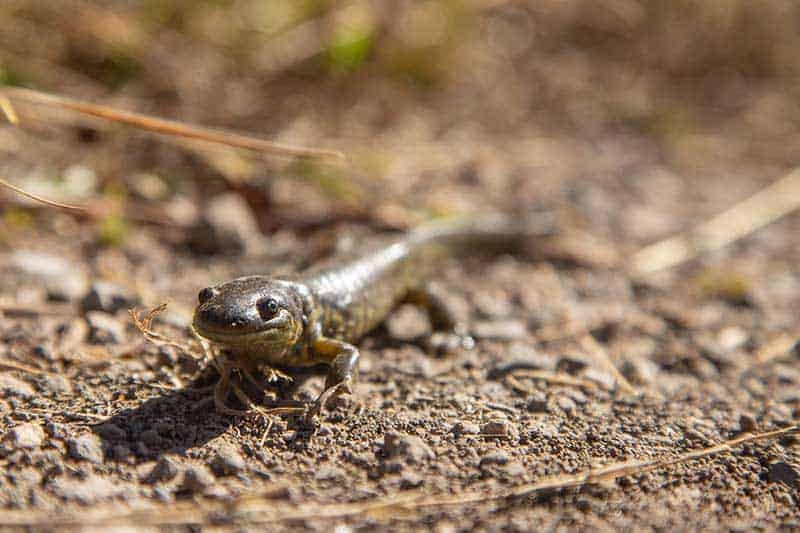
Scientific name: Ambystoma tigrinum
The medium to large Eastern Tiger salamander grows between 7 to 8.25 inches in length, with males having longer tails than females. They are black or dark brown with large blotches or spots ranging from dull olive-brown to bright yellow.
These salamanders display elaborate mating rituals after they migrate to fishless ponds during autumn rains. You can find them throughout Missouri, but they are more common in the northern counties.
4. Western Slimy Salamander

Scientific name: Plethodon albagula
Another salamander in Missouri, the Western Slimy salamander, is black with silver flecks all over its body. They also typically have grooves on their sides and grow between 4.75 and 6.75 inches long. These salamanders secrete a thick, sticky substance that will adhere to your skin like glue and is hard to remove.
You can find them in the southern half of Missouri, except most counties in the Mississippi Lowlands. They prefer wooded hillsides and moist areas such as under logs or rocks in damp ravines.
5. Eastern Long-Tailed Salamander
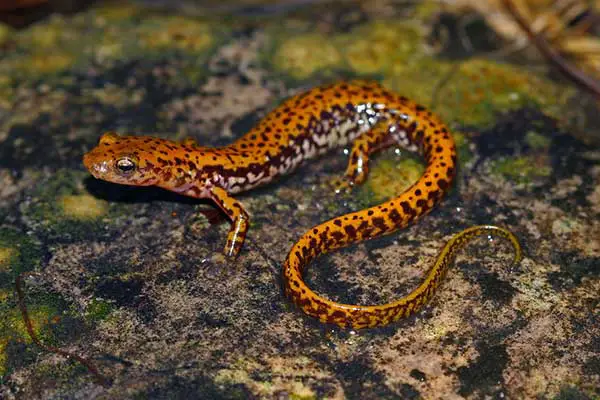
Scientific name: Eurycea longicauda longicauda
As their name suggests, this salamander has a long tail and is found only in the southeastern area of Missouri, except for the Bootheel. These salamanders are typically yellow or a shade of orange-yellow or greenish-yellow with dark spots and markings. They grow up to 6.25 inches in length.
6. Four-Toed Salamander
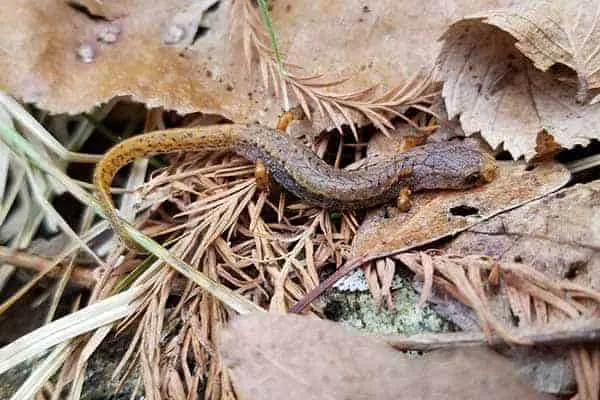
Scientific name: Hemidactylium scutatum
The small Four-toed salamander grows between 2 and 3.24 inches long with a thick, round tail and a blunt snout. They have four toes on all limbs and are typically brown or yellowish-tan with irregular black spots.
You can find these salamanders in the eastern half of the Ozarks, including the St. Francois Mountains. However, a population also lives in Lincoln County, north of the Missouri River. They prefer living along spring-fed creeks and forested headwater streams.
7. Ringed Salamander
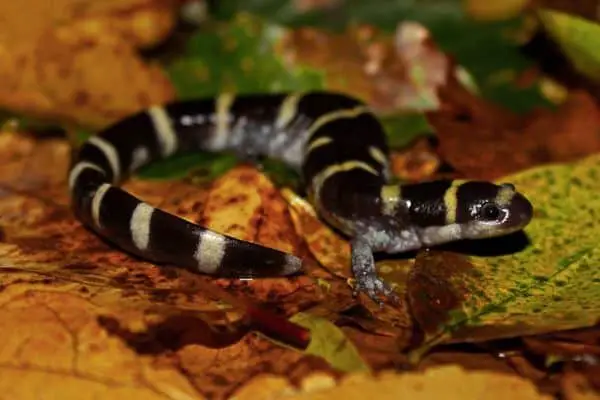
Scientific name: Ambystoma annulatum
The Ringed Salamander has elongated heads and necks. They are typically black to dark brown and, as their name indicates, have a series of yellow to white rings around their backs. These salamanders grow between 5 and 7 inches long. You can find them in the southwestern and central Ozarks or the hills along the Missouri River.
8. Mole Salamander
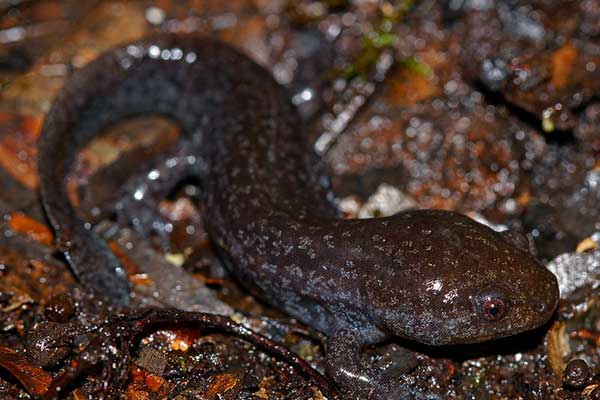
Scientific name: Ambystoma talpoideum
The Mole salamander is noticeable from their small body and tail accompanied by a large head and limbs. They are typically brown or dull gray with light flecks on their bodies and they grow up to 4 inches long. You can only find these salamanders in southeastern Missouri in the Mississippi Lowlands.
9. Central Newt
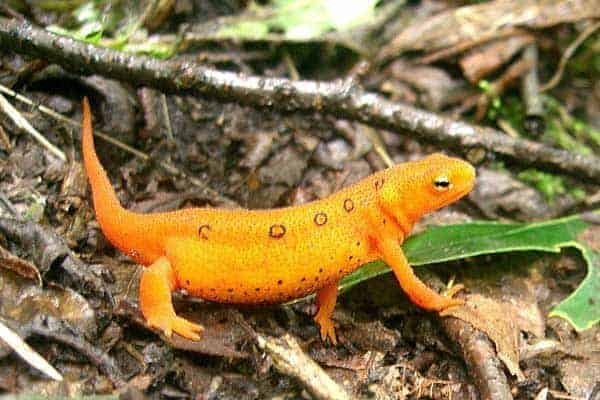
Scientific name: Notophthalmus viridescens louisianensis
Newts are semi-aquatic salamanders that alternate from terrestrial to aquatic habitats. The Central newt, a subspecies of the eastern newt, can be found throughout most of Missouri’s forested regions. They prefer eating small invertebrates, such as mollusks, worms, crayfish, and tadpoles.
Since they are semi-aquatic, newts don’t have gills as adults and breath through lungs. Eastern newts can grow between 2.5 and 4 inches long. These salamanders are typically olive-brown with bright orange or yellow bellies and black spots covering their entire body.
10. Cave Salamander
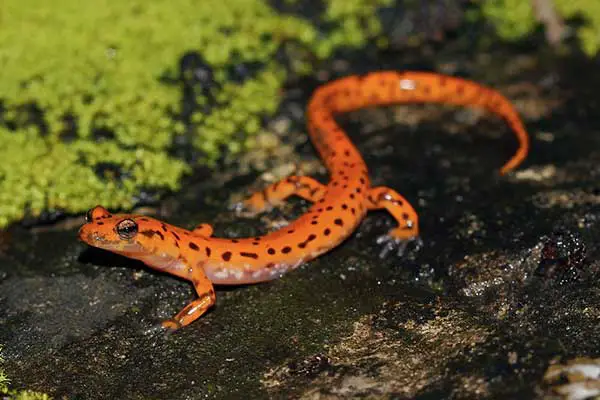
Scientific name: Eurycea lucifuga
The Cave salamander is typically orange with black or dark brown spots on their back and black tips on their long tail. Adults will grow around 4 to 6 inches long. You can typically find them living in caves, however, some also live along springs or rocky streams in wooded areas. In Missouri, there are populations in most of the southern half of the state, except the Mississippi Lowlands.
11. Grotto Salamander
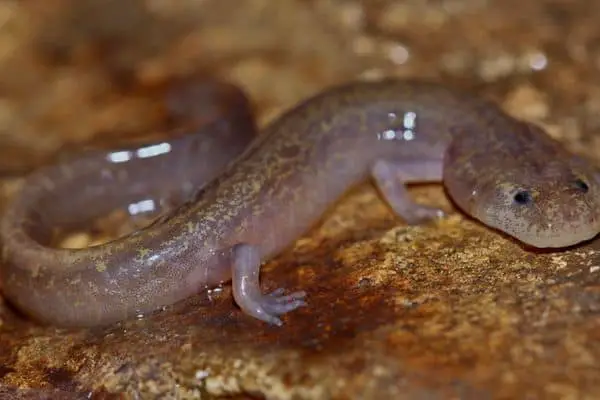
Scientific name: Eurycea spelaea
The Grotto salamander is a lungless species also known as the Ozark blind salamander since you can find them in the wet caves of the Ozark plateau. Living primarily in caves, they are partly or completely blind and lack gills. Their eyes are small and their coloring is pink to beige, sometimes with streaks or spots on their tails. These salamanders grow between 3 to 4.75 inches long.
12. Ozark Zigzag Salamander
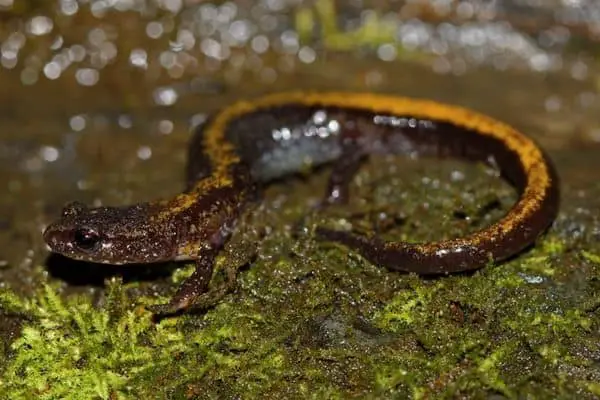
Scientific name: Plethodon angusticlavius
As their name suggests, you can find these salamanders in the Ozark mountain regions of Missouri. They are mainly in the southwestern counties by the border of Arkansas. They are dark with a yellow, orange, or red stripe down their back that’s wavy at the edges or defined by black or dark brown pigments. These salamanders grow between 2 and 4 inches in length.
13. Southern Red-Backed Salamander
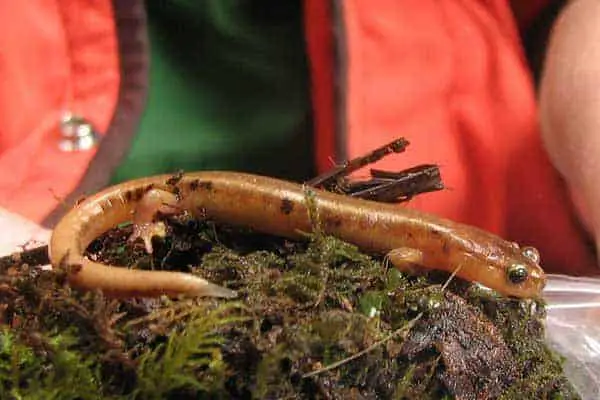
Scientific name: Plethodon serratus
The Southern Red-backed salamander is dark and slender with an orange or red stripe on their backs and 18 vertical grooves on their sides. These salamanders grow between 2 to 4 inches in length.
They are terrestrial, living in forests in the central, eastern, southern, and southeastern Ozarks. You can typically find them under rotten logs, rocks, moss, or near springs and seepages during the dry summer.
14. Common Mudpuppy
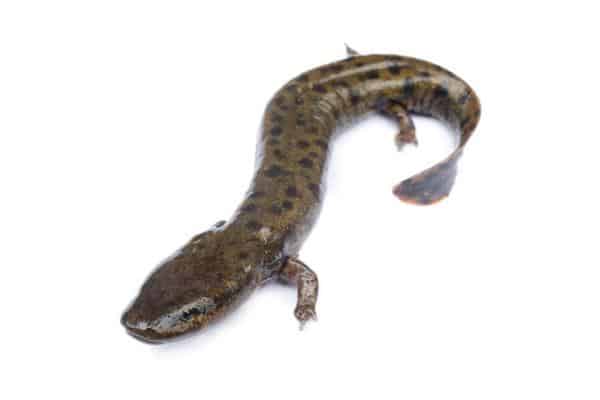
Scientific name: Necturus maculosus
The common mudpuppy is a species of conservation concern in Missouri. You can find them throughout the state, except for the north-central, northwestern, and southern areas.
This salamander is brown to gray with bluish-black spots. They can grow between 8 and 13 inches long as adults. An interesting fact about mudpuppies is that they have only four toes on their front feet instead of five like most salamanders.
15. Red River Mudpuppy
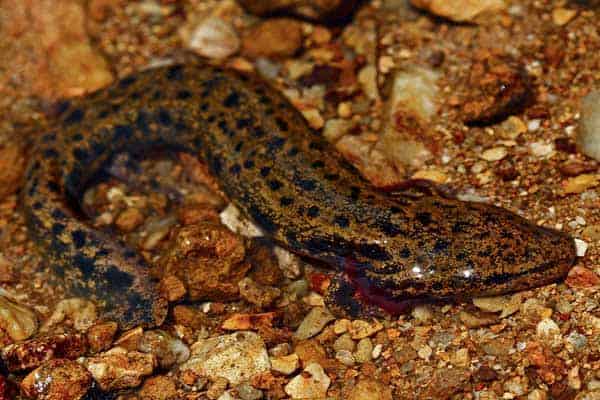
Scientific name: Necturus maculosus louisianensis
As their name suggests, the Red River mudpuppy lives only in the Red River and neighboring drainage systems in southern Missouri. They will only leave the water to travel to another part of the river with cleaner water.
These salamanders are light brown or yellowish, with a white stripe. They are considered a subspecies of the common mudpuppies or referred to as the Louisiana waterdog.
16. Western Lesser Siren
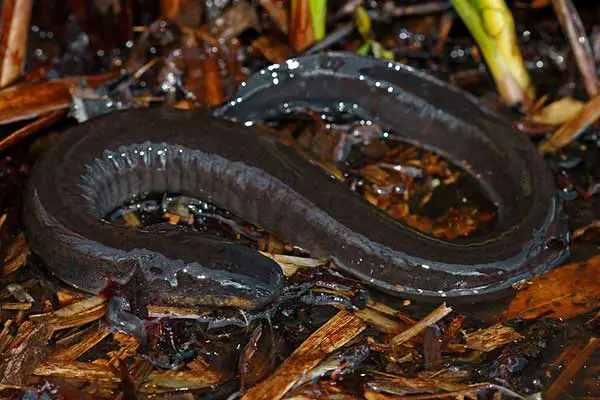
Scientific name: Siren intermedia nettingi
Sirens are eel-like aquatic salamanders with no hind limbs. This species maintain their external gills throughout their lives and live mostly in ponds, streams, lakes, and ditches. You can find the Western Lesser siren along the Mississippi River and in the Bootheel of southeastern Missouri. They have slippery brown to dark gray skin and grow up to 16 inches long.
17. Eastern Hellbender
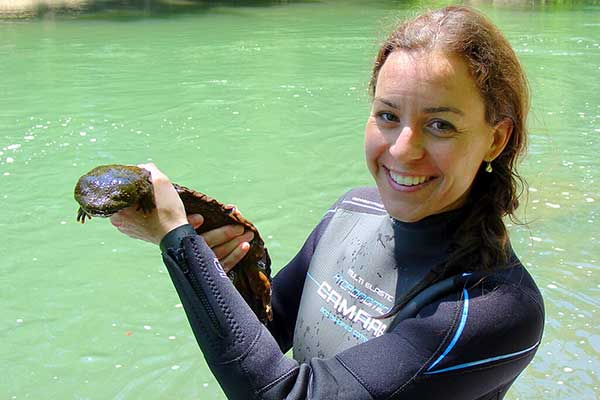
Scientific name: Cryptobranchus alleganiensis
The Hellbender is one of several giant aquatic salamanders in the world, also called devil dogs or snot otters. They typically grow up to 2 feet long and weigh up to 5 pounds.
These salamanders have been proposed for the endangered species list in the state since Missouri Eastern Hellbenders have little to no chance for interbreeding to preserve their population. You can typically find them in cool flowing rivers of eastern and central Missouri, living under large, flat rocks and eating insects, small fish, and crawdads.
18. Ozark Hellbender
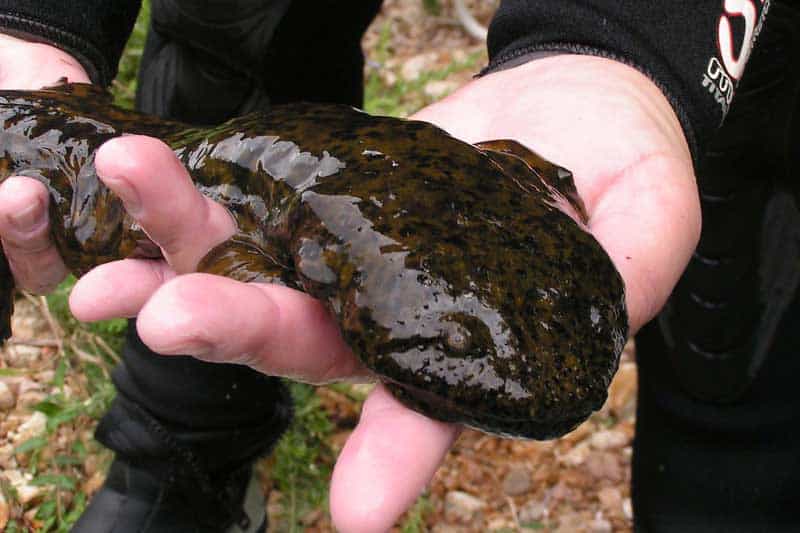
Scientific name: Cryptobranchus alleganiensis bishopi
Missouri is the only state where you can find both the Eastern Hellbender and Ozark Hellbender subspecies of giant salamanders. The Ozark Hellbender is a federally endangered species living in the Ozark streams and rivers of southern Missouri. These salamanders are fully aquatic and often rest under flat rocks in the water.
19. Three-Toed Amphiuma
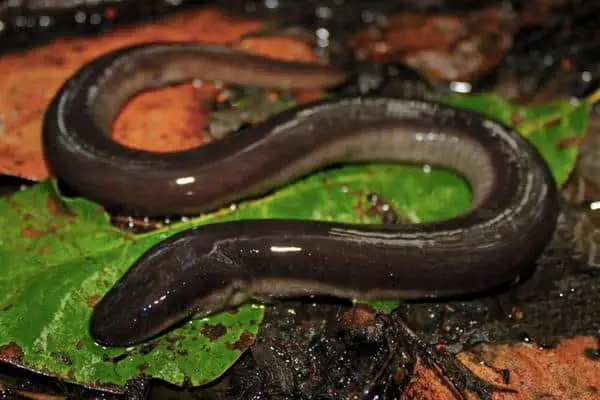
Scientific name: Amphiuma tridactylum
Amphiumas are aquatic salamanders that look similar to snakes with a cylinder body and pointed head. However, they have four tiny legs. As its name suggests, the Three-toed amphiuma has three toes on each limb. It can also grow between 18 and 30 inches in length. You can find these salamanders in the lowlands of the far southeastern Missouri counties.
